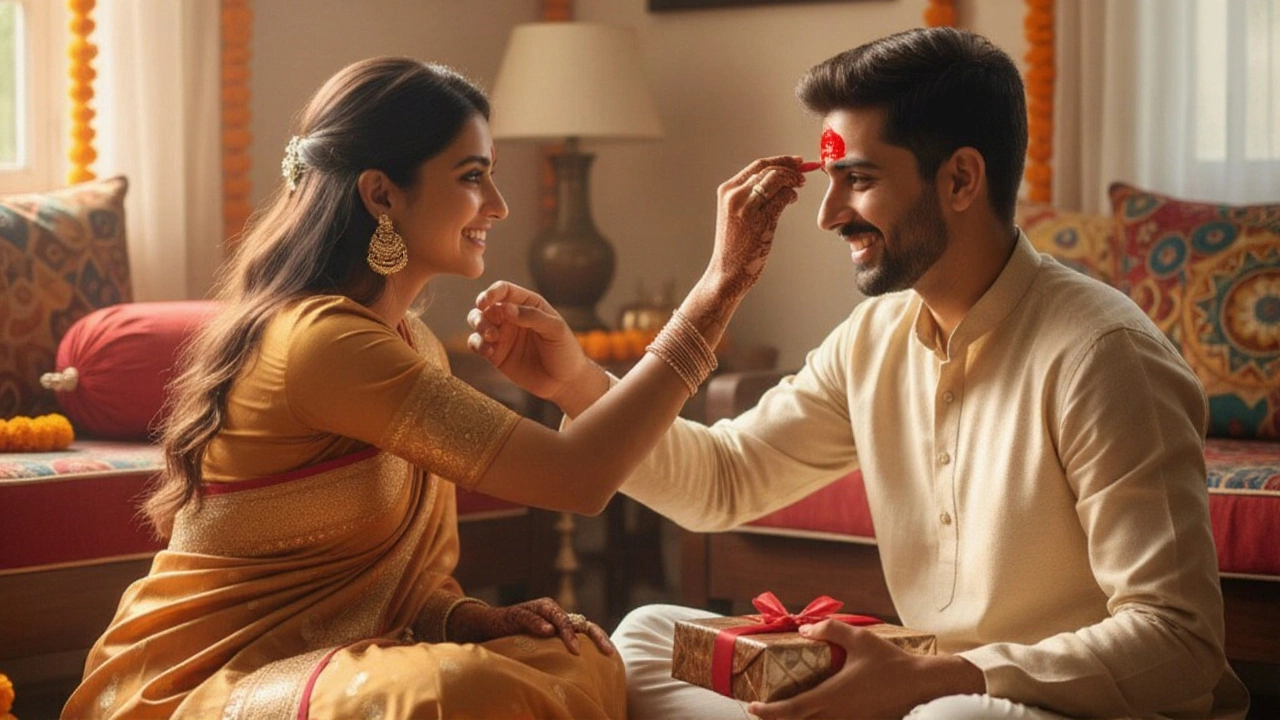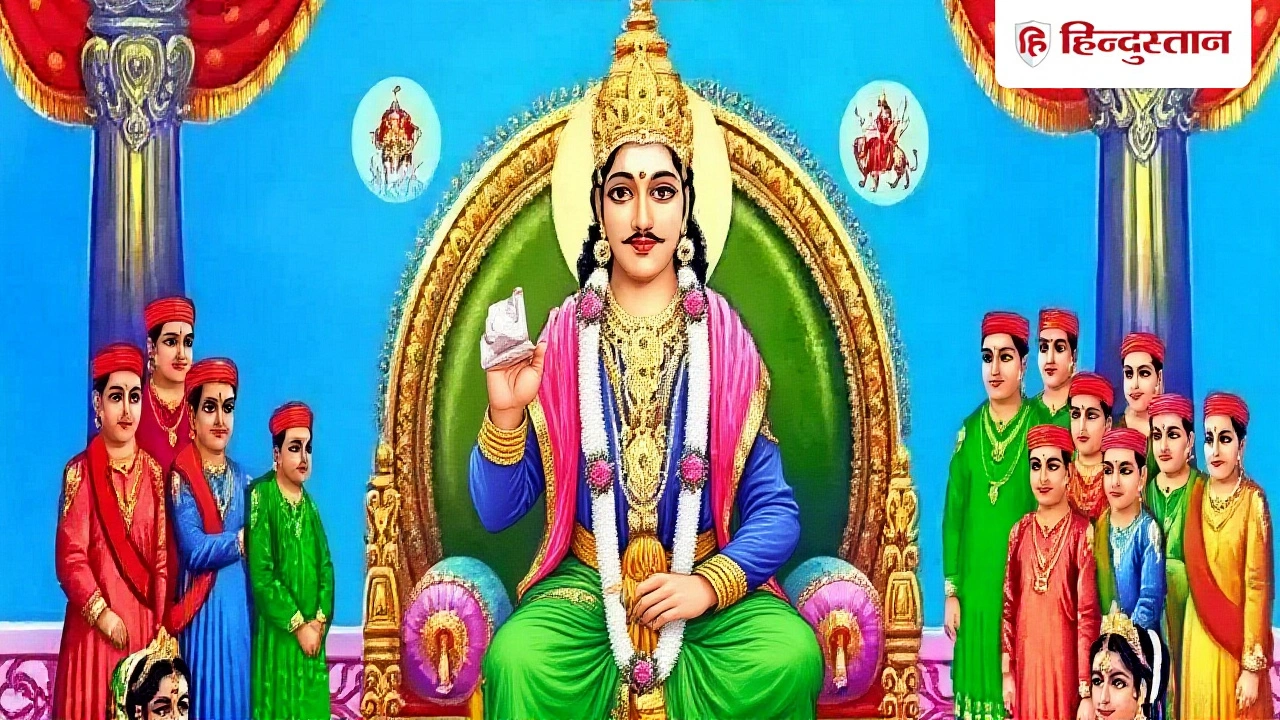Bhai Dooj 2025: October 23 Marks Auspicious Tilak Muhurat Across India

When Bhai DoojIndia falls on Thursday, October 23, 2025, families across the subcontinent will gather for the final burst of Diwali celebrations. The lunar calendar places the festival on the Dwitiya Tithi of Shukla Paksha in the Kartik month, a timing confirmed by multiple almanac experts. According to Drik Panchang, the tithi begins at 08:16 PM on October 22 and closes at 10:46 PM on October 23, making the afternoon window between 01:13 PM and 03:28 PM the most auspicious for the traditional tilak ceremony.
Historical Roots and Mythic Origins
The festival goes by several names—Yama Dwitiya, Bhau Beej, Bhai Dwitiya, and Bhrathri Dwitiya—reflecting regional flavor but sharing a common story. Legend says Lord Yama, the god of death, visited his sister Yama Devi on this day; after she applied a tilak to his forehead and prayed for his long life, Yama blessed all siblings who performed the same ritual. This mythic origin first appears in ancient Puranas and has been handed down through oral tradition for centuries.
2025 Date Confirmation and Muhurat Details
The Times of India published a detailed guide on October 23, 2025, citing the Aparahna Muhurat—01:13 PM to 03:28 PM—as the golden window for applying the tilak. The newspaper’s religion‑festivals desk highlighted that this period aligns with the planet’s favorable positioning, according to Vedic astrology. Hindustan Times echoed the same timing, adding that the afternoon sun provides the best atmosphere for the ritual prayers.
Core Rituals: Tilak, Prayers, and Sweets
The heart of Bhai Dooj lies in a simple yet profound act: sisters draw a roli‑haldi (red vermilion and turmeric) tilak on their brothers' foreheads while invoking longevity, health, and prosperity. As the Hindustan Times reported, "Sister applies roli and haldi tilak to her brother"—a line that sums up the ceremony in a single breath. The brothers, in turn, offer sweets—commonly peda or ladoo—and a small gift, symbolising gratitude.
Family members often recite traditional shlokas, such as "Om Yama Devi, Mata Devi," while lighting a small oil lamp. The ritual concludes with the brothers promising to protect their sisters throughout life, a reciprocal promise that balances the earlier Raksha Bandhan vow.
How Bhai Dooj Differs from Raksha Bandhan
Both festivals celebrate sibling bonds, yet the focus flips. Raksha Bandhan, observed in August, centers on brothers tying a rakhi (protective thread) on sisters' wrists, symbolising the brother’s promise of protection. Bhai Dooj, on the other hand, turns the spotlight on sisters: they earnestly pray for their brothers' wellbeing through the tilak, sweets, and blessings. Harishyam Arts captured this nuance, noting, "While both festivals celebrate the sibling bond, Raksha Bandhan is mainly about brothers protecting sisters with the rakhi thread, whereas Bhai Dooj focuses on sisters praying for brothers' long life and prosperity with tilak, sweets, and rituals."
Regional Variations and Local Names
Across India, the festival wears different hats. In West Bengal and Odisha, it’s called Bhau Beej, and people often exchange sweet rice dishes. In Gujarat, families may perform a brief puja to Lord Yama before the tilak. In the Hindi‑belt, the term Bhrathri Dwitiya is common, and a special bhajan dedicated to Yama‑Devi is chanted. Despite these colorful variations, the core act—sister’s tilak and brother’s gratitude—remains unchanged.

Cultural Significance and Modern Outlook
Beyond the family circle, Bhai Dooj reflects broader societal values: mutual respect, intergenerational care, and the idea that protection is a two‑way street. In urban settings, the festival has taken on a social media dimension, with hashtags like #BhaiDooj2025 trending on platforms such as Instagram and X. Yet, older generations caution against letting digital hype dilute the ritual’s sincerity.
Social anthropologist Dr. Meera Joshi of the Indian Institute of Culture observes, "In an era of rapid change, festivals like Bhai Dooj act as cultural anchors, reminding us that family ties are both emotional and ritualistic. The tilak ceremony is a living embodiment of that continuity."
What to Expect in 2025: Practical Tips for Celebrants
- Mark the Aparahna Muhurat (01:13 PM – 03:28 PM) on your calendar; most astrologers agree this is the optimal window.
- Gather roli, haldi, and a clean cotton swab for the tilak. Fresh, high‑quality turmeric yields a brighter yellow.
- Prepare sweets ahead of time—traditional peda, kaju‑katli, or any regional treat your brother loves.
- If you’re away from home, a video call during the Muhurat still counts, according to many clergy members.
- Remember the greeting: "Happy Bhai Dooj! May your life be filled with happiness and prosperity, dear brother."
Looking Ahead: Bhai Dooj in a Changing India
With each passing year, the festival adapts. Environmentalists are encouraging the use of natural pigments instead of synthetic roli, while some tech startups offer virtual tilak services. Still, the underlying sentiment—sisters praying for their brothers—remains a timeless thread.
Frequently Asked Questions
Why is the tilak ceremony considered the most important part of Bhai Dooj?
The tilak, made from roli and haldi, symbolizes the sister’s heartfelt prayers for her brother’s longevity and prosperity. This ritual dates back to the myth of Yama and Yama Devi, where the sister’s blessing granted the god a long life. Contemporary families view the tilak as a tangible expression of love and a promise of protection in return.
How does Bhai Dooj differ from Raksha Bandhan in terms of symbolism?
Raksha Bandhan centers on the brother’s duty to safeguard his sister, marked by the tying of a rakhi. Bhai Dooj flips the focus: sisters offer prayers and a tilak, emphasizing their wish for the brother’s well‑being. Both festivals celebrate sibling bonds, but the direction of protection and blessing differs.
What are the exact auspicious timings for 2025’s Bhai Dooj?
Astrologers agree that the Aparahna Muhurat from 01:13 PM to 03:28 PM on Thursday, October 23, 2025, offers the most favorable planetary alignment for the tilak ceremony. The lunar tithi spans from 08:16 PM on October 22 to 10:46 PM on October 23, as per Drik Panchang.
Which regions use a different name for Bhai Dooj, and do they have unique customs?
In West Bengal and Odisha the festival is called Bhau Beej, often celebrated with sweet rice dishes. Gujarat families may perform a brief Yama puja before the tilak, while in many Hindi‑speaking states it’s known as Bhrathri Dwitiya and includes a special bhajan dedicated to Yama‑Devi.
How are modern technologies influencing Bhai Dooj celebrations?
Digital platforms now host live streams of the tilak ceremony, allowing diaspora families to participate remotely. Some startups even offer virtual reality experiences where avatars perform the ritual together, ensuring that distance doesn’t dilute the emotional core of the festival.